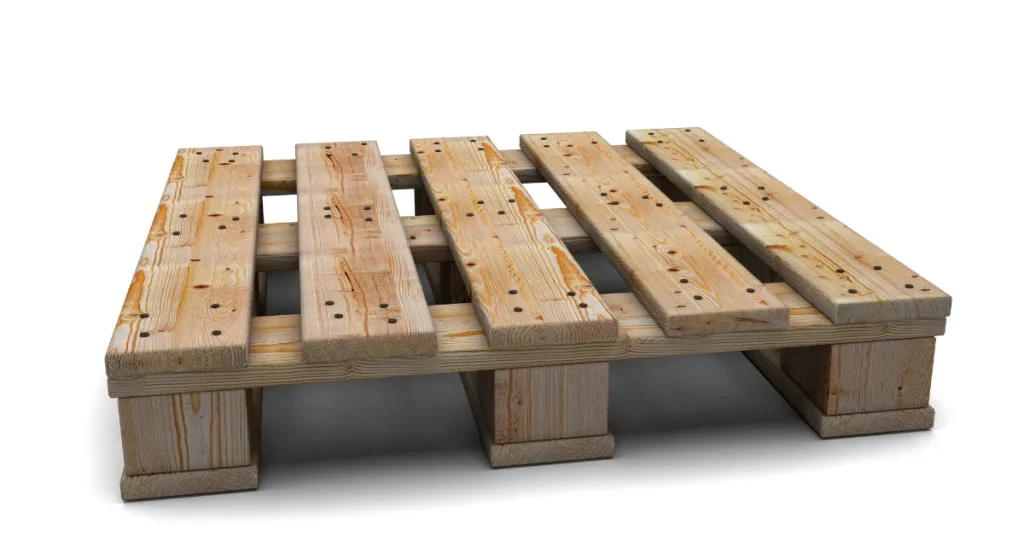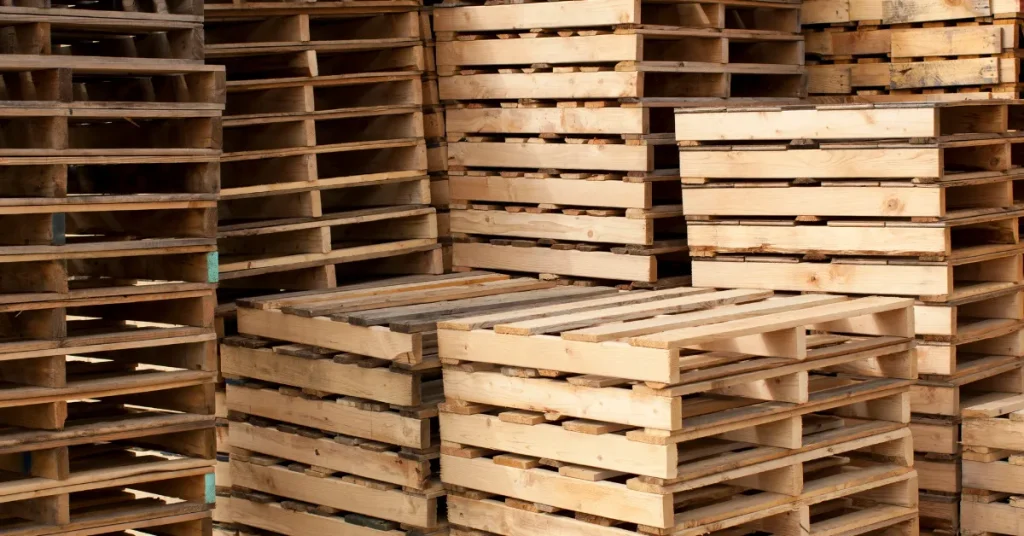A standard pallet in North America is 48 inches wide by 40 inches deep. European pallets, known as Euro pallets, are typically 800 millimeters wide which is approximately 31.5 inches.
Understanding pallet dimensions is crucial for optimizing transport efficiency and warehouse storage planning. They serve as the foundational base for stacking, storing, and transporting goods, with size variations according to regional standards and industry requirements.
Key industries including manufacturing, retail, and logistics rely on these dimensions to streamline operations and reduce costs.
The width of a pallet directly impacts how much space a single unit occupies both in shipping containers and on storage racks, making precise knowledge of pallet size vital for loading plans and inventory management.

Standard Pallet Sizes Across The Globe
Pallets serve as the foundation for transporting goods worldwide. From small businesses to large corporations, understanding pallet dimensions can impact your logistics and shipping strategy. Let’s explore the size standards that vary by region and the options for custom solutions.
North American Pallet Dimensions
North America favors the 48-inch by 40-inch pallet.
Known as the GMA (Grocery Manufacturers Association) pallet, this size caters to a range of industries.
Here’s a quick look at North American pallet dimensions:
| Type | Dimensions (W x L) |
| GMA Pallet | 48″ x 40″ |
| Half Pallet | 24″ x 40″ |
European Pallet Standards
The European pallet market centers around the Euro pallet, also known as EUR pallet.
This standardized size is crucial for optimizing space in shipping and storage.
Euro pallet dimensions are:
- Euro Pallet (EUR): 1200mm x 800mm
- Euro Pallet (EUR2): 1200mm x 1000mm
Asian Pallet Variations
Asia uses a diverse array of pallet sizes. Two prominent sizes are:
- JP Pallet: 1100mm x 1100mm, widely used in Japan.
- Asian Pallet: Varies, with no strict standardization across countries.
Custom Pallet Solutions
Personalized pallets cater to unique goods and shipping requirements.
Custom solutions offer flexibility:
- Sizes to fit specific products or containers.
- Different materials such as wood, plastic, or metal.
- Features like racking slots or spill containment.
Factors Influencing Pallet Width
When selecting the right pallet, width plays a crucial role. Different industries and applications have specific requirements. Understanding these factors ensures efficiency and safety. Below we delve into the main aspects that influence pallet width.
Load Requirements
The weight and dimensions of the cargo determine the pallet size needed. A standard pallet typically measures 48 inches long by 40 inches wide; ideal for many loads.
Heavier or irregular items may require wider pallets to distribute weight effectively and prevent damage during handling.
Material Handling Equipment
The width of a pallet should match the handling equipment used. Forklifts and pallet jacks have specific fork spreads.
A mismatch can lead to product damage or create workplace hazards. Select a pallet width that complements your equipment capabilities to maintain a smooth operation.
Storage Space Considerations
Your storage environment impacts the pallet size choice. Maximize your warehouse space with pallets that fit perfectly into your storage racks. Choosing the correct width helps optimize storage density and accessibility, affecting overall warehouse efficiency.
Transportation Constraints
Lastly, transportation plays a pivotal role. Shipping containers, trailers, and trucks have fixed widths. Pallets need to fit these dimensions for cost-effective shipping. Standard widths ensure more pallets per shipment and fewer transportation headaches.
The Impact Of Pallet Width On Storage

Understanding pallet width changes how businesses store goods. Wide pallets can influence storage, accessibility, and workplace safety. Let’s explore these impacts to ensure optimal storage solutions.
Warehouse Layout Efficiency
Pallet size affects warehouse organization. The width of a pallet must match shelf dimensions. This optimizes space and creates a streamlined environment.
A precise warehouse layout requires:
- Proper pallet sizing data,
- Matching storage systems,
- Efficient use of the available area.
Measure the pallets. Design aisles and racking units to fit. This avoids wasted space and boosts efficiency.
Maximizing Storage Capacity
The right pallet width ensures maximum storage. With narrower pallets, you fit more units in a space. Yet, wider pallets may hold larger products.
A warehouse should seek balance:
- Between pallet width and product size,
- Among different pallet styles,
- In the number of storage levels.
Select pallet sizes that elevate storage quantity while fitting products securely.
Safety Concerns With Pallet Sizing
Pallet width is not just about fitting more products. It’s also about safety. Wide pallets may cause:
- Uneven weight distribution,
- Risk of collapse under heavy loads,
- A hazard in narrow aisles.
Ensure pallets fit the rack and don’t protrude into aisles, preventing accidents.
Inventory Accessibility
Quick access to products is crucial. Pallet width should help with this.
To improve accessibility:
- Use the right width to avoid deep stacking,
- Allow space for forklifts or pickers,
- Consider frequent handling needs.
This ensures an efficient pick process and streamlines inventory management.
Selecting The Right Pallet For Your Needs
When it comes to logistics, picking the correct pallet size is crucial. Not all pallets are equal. Knowing the width, height, and strength can make a big difference. Let’s explore how to choose the perfect pallet.
Assessing The Product Type
The nature of your product guides pallet choice. Delicate items need sturdier platforms. Heavy machinery requires robust support. Always check pallet material and design for compatibility with your goods. Choose wisely to avoid damage.
Calculating Weight Distribution
Even weight distribution is key for safe shipping. Overloading can cause breakage. Use a pallet that spreads weight evenly. Adequate load capacity prevents accidents and losses.
Analyzing Shipping Methods
Different carriers have specific pallet size requirements. Air cargo might need smaller pallets. Ocean and road freight could allow larger sizes. Check with your shipping company beforehand to ensure compatibility.
Evaluating Cost-efficiency
Don’t forget the bottom line. Cost plays a major role in selecting a pallet. Opt for a pallet that balances quality and expense. Consider reusable types to save money in the long term.
Innovations In Pallet Design And Usage
Exploring the innovation in pallet design and usage unveils exciting changes in the industry. Pallets have evolved far beyond simple wooden structures. They now offer advanced solutions, promoting efficiency and sustainability.
Sustainable Material Options
As green initiatives take center stage, pallet manufacturers steer away from traditional wood.
- Recycled plastics and composites reduce waste.
- Bamboo offers a renewable and sturdy alternative.
- Lightweight cardboard pallets save on transport emissions and costs.
Smart Pallet Technologies
Integration of tech in pallets boosts transparency in supply chains.
| Technology | Benefits |
| RFID Tags | Real-time tracking and inventory management |
| IoT Sensors | Monitor conditions like temperature and humidity |
Modular And Adjustable Pallets
Customizable sizes make storage and shipping flexible.
- Interlocking pieces allow dynamic configuration.
- Collapsible designs save space when not in use.
Future Trends In Pallet Sizing
The demand for custom sizing shapes the future of pallets.
- Advancements may lead to standardization of new sizes.
- Industries could see pallets designed for niche product types.
- Expect a shift towards multi-size and multi-use pallets.
Best Practices In Pallet Storage Management

Managing pallets is key to a smooth-running warehouse. Knowing how wide a pallet is, is just the start. Follow best practices to keep products safe and make work easy.
Regular Inspection And Maintenance
Ensure pallets stay in top shape through routine checks. Look for broken planks or protruding nails. Fix them quickly to prevent damage or injury.
Stacking And Loading Techniques
Stack pallets smartly to maximize space. Keep heavier loads on the bottom. Ensure they’re aligned properly to prevent accidents.
- Do not exceed recommended height limits.
- Practice even weight distribution across pallets.
Warehouse Management Systems Integration
Use tech to better manage pallets. A Warehouse Management System (WMS) can track each pallet. This keeps inventory updated and organized.
Training For Handling And Safety Compliance
Train your team on the right way to handle pallets. They must know the rules. This keeps everyone safe and products undamaged.
- Provide courses on equipment operation.
- Ensure understanding of safety protocols.
FAQs About How Wide Is A Pallet
What Size Is A 48×40 Pallet?
A 48×40 pallet refers to a standard pallet size with dimensions of 48 inches by 40 inches.
What Is Wide Pallet Size?
A wide pallet typically measures 48 inches by 48 inches, accommodating larger loads and enabling efficient storage and transport for bigger items.
What Is The Length Of 1 Pallet?
The standard length of a pallet is 48 inches (122 centimeters).
How Many 48×40 Pallets Fit On A Truck?
Typically, 20 standard 48×40 pallets can fit into a 40-foot truck, arranged in a single stack. A 53-foot truck can usually accommodate up to 26 pallets of the same size.
Conclusion
Understanding pallet dimensions is crucial for optimizing storage and shipping efficiency. Most commonly, pallets adhere to standard sizes depending on their geography; the typical size in North America is 48 by 40 inches.
Always verify measurements for your specific needs to ensure seamless operations in your business logistics.
Resources:
1. https://www.af.mil/News/Article-Display/Article/132621/new-cargo-pallet-will-save-us-military-13-million/
